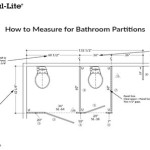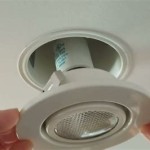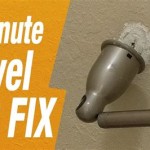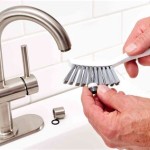How to Remove and Install a New Bathroom Faucet
Replacing a bathroom faucet can be a relatively simple DIY project, even for those with limited plumbing experience. However, it is crucial to approach the task with caution and follow the necessary steps to ensure a successful and leak-free installation. This article will guide you through the process of removing an old bathroom faucet and installing a new one.
1. Gathering the Necessary Tools and Materials
Before embarking on this project, gather the following tools and materials:
- Adjustable wrench
- Channel-lock pliers
- Phillips head screwdriver
- Flathead screwdriver
- Plumber's tape (Teflon tape)
- Basin wrench
- New bathroom faucet
- New supply lines (if required)
- Optional: Replacement escutcheons (decorative plates)
It is essential to select a faucet compatible with your existing plumbing setup, including the number and type of holes in the sink. If the new faucet requires different supply lines, ensure you have the appropriate replacements.
2. Turning Off the Water Supply and Draining the System
Before disassembling the faucet, it is critical to shut off the water supply to prevent water damage during the process. Locate the shut-off valves for the hot and cold water lines leading to the bathroom sink. These valves are typically located under the sink or on the wall nearby. Turn the valves counterclockwise to fully shut off the water flow.
Open the faucet to drain any remaining water in the lines. This will minimize the amount of water spilled during the removal process.
3. Disassembling the Old Faucet
Once the water supply is off and the system is drained, carefully disassemble the existing faucet. Begin by removing the handle or handles by unscrewing the retaining nut or screws. Then, remove the decorative escutcheon or cover plate by unscrewing the screws holding it in place.
Next, use an adjustable wrench or channel-lock pliers to loosen the nuts holding the faucet body to the sink. These nuts are typically located beneath the faucet. As you loosen the nuts, it may be helpful to have someone assist you by holding the faucet body stationary to prevent damage.
Once the faucet body is free from the sink, disconnect the supply lines. These lines are typically connected to the faucet body with compression fittings. Use an adjustable wrench to loosen the nuts on the fittings and carefully disconnect the lines from the faucet.
4. Preparing the New Faucet for Installation
Before installing the new faucet, ensure the sink and surrounding area are clean and free of debris. Inspect the new faucet to familiarize yourself with its components and the installation process. Check the instructions provided with the faucet for specific guidelines and safety precautions.
If necessary, wrap the threaded ends of the supply lines with plumber's tape (Teflon tape) to create a watertight seal. This tape is usually white and comes in a roll. Wrap the tape clockwise around the threads, ensuring that each layer overlaps by about half the width of the tape.
5. Installing the New Faucet
Place the new faucet body into the sink and align the holes for the supply lines and spout. If the faucet has a mounting plate, ensure it is securely fastened to the sink.
Connect the supply lines to the faucet using the compression nuts. Tighten these nuts firmly but avoid overtightening, which could damage the fittings.
If the faucet has a separate spout, secure it to the faucet body by tightening the retaining nuts or screws. Connect the spout's drain pipe to the sink's overflow hole.
Attach the decorative escutcheon or cover plate and secure it with screws. Finally, install the handle(s) and tighten their retaining nuts or screws.
6. Testing the Faucet and Re-connecting the Water Supply
Once the faucet is installed, carefully turn the water supply back on, starting with the cold water valve. Check for leaks at the connections and around the faucet body. If any leaks are detected, tighten the loose connections.
After ensuring no leaks, run the hot and cold water through the faucet and check the water flow and temperature. Adjust the handle(s) to ensure proper control. If necessary, add more plumber's tape to the supply lines to create a tighter seal.
Remember to dispose of the old faucet and supply lines in an environmentally responsible manner.

Diy How To Replace A Bathroom Sink Faucet Remove Install

How To Replace A Bathroom Faucet Home Repair Tutor

How To Remove And Install A Bathroom Faucet

How To Remove And Install A Bathroom Faucet

How To Replace Your Bathroom Faucet Plumbcraft Series With Penny

Replacing A Bathroom Faucet Fine Homebuilding

How To Remove And Install A Bathroom Faucet

Bathroom Faucet Replacement For Beginners Making Maanita

How Do I Replace Bathroom Sink Faucet Handles Cleaning More

Installing A New Bathroom Faucet
Related Posts







